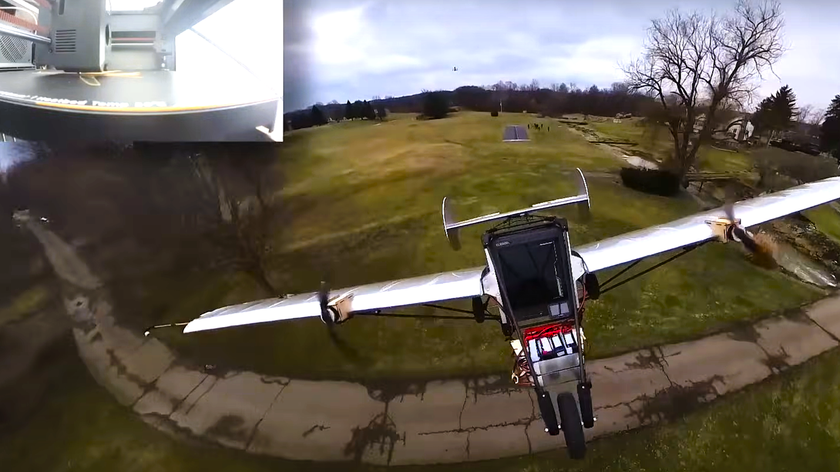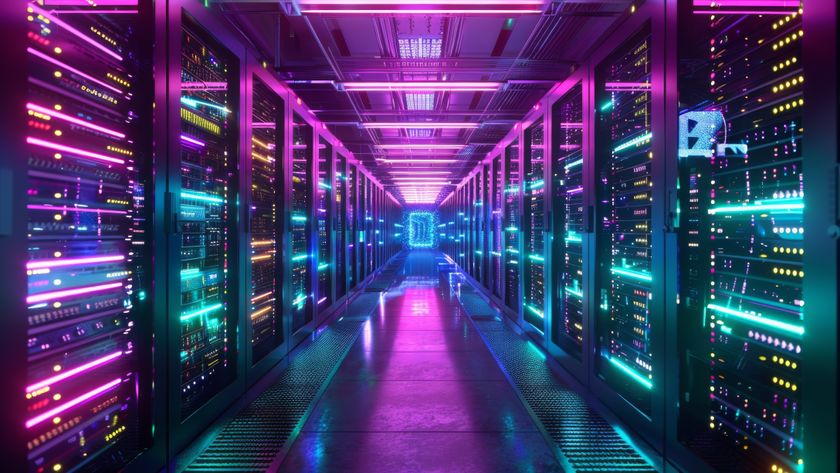Laser Heat Used to Make HDD Write Transfers Faster
Researchers have discovered that recording data on a HDD platter using a quick laser burst is much faster than the traditional use of a magnetic field.

Researchers at the University of York's Department of Physics have discovered a way to record data on an old-school mechanical hard drive without using a magnetic field. Instead, they used laser heating which processes information much faster on a magnetic medium (platter in this case) than current means used in today's drives. This discovery should not only make future magnetic recording devices perform much faster, but also more energy efficient.
"This revolutionary method allows the recording of Terabytes (thousands of Gigabytes) of information per second, hundreds of times faster than present hard drive technology," said York physicist Thomas Ostler in a paper published in the February edition of the Nature Communications journal. "As there is no need for a magnetic field, there is also less energy consumption."
In the paper, Ostler describes a system that uses a sub-picosecond laser pulse to quickly heat the magnetic medium to around 800 degrees Celsius for a brief moment. This heating significantly speeds up the process of reversing the magnetic polarity of a particular bit. Current hard drives use an external magnetic field applied to a spinning magnetic medium to invert the polarity of the two magnetic poles.

An experimental image supplied to Science Daily shows two nano islands that have different magnetic orientations. After the islands are hit with a single laser pulse, the magnetic direction of both islands changes. By the fourth pulse, they've returned to their initial state.
"For centuries it has been believed that heat can only destroy the magnetic order," said Dr. Alexey Kimel, from the Institute of Molecules and Materials, Radboud University Nijmegen. "Now we have successfully demonstrated that it can, in fact, be a sufficient stimulus for recording information on a magnetic medium."
The team of scientists behind the discovery include researchers from Spain, Switzerland, Ukraine, Russia, Japan and the Netherlands. The experimental work was conducted at the Paul Scherrer Institut in Switzerland, the Ioffe Physical Technical Institute of the Russian Academy of Sciences and Radboud University Nijmegen, Netherlands.
Stay On the Cutting Edge: Get the Tom's Hardware Newsletter
Get Tom's Hardware's best news and in-depth reviews, straight to your inbox.
-
dcdc1 dcdc1isn't that how minidisc works/worked?ah - didn't read it properly - seems a bit like minidisc but without the magnetic head.Reply -
rolflorenz 800 degrees Celsius O_OReply
If a write a full disk in one go then I can make a BBQ as well, great news!!! xD
I wonder what would happen if a make a copy of a full RAID, ROFL -
virtualban will the new drives be resistant to floods and price increases in contrast to all tech trends?Reply -
cmartin011 imagine how HOT a hard drive would become using this tech... at least there would be less of a chance of a head crash i imagine now how would it go about helping reads?Reply -
drwho1 This sounds promising.Reply
I wonder is hard drives have been traditionally rated by rotational speed (5400/5900/7200/10000) RPM's
then, how would they be rated now when/if this technology makes it to the consumer?
Will this laser allow for multiple recordings on hard drives?
What about Disk Defragmenting?
Like some asked: What about read speeds?
Would it boot faster than a hard drive?
Would speed be comparable or better than SSD's?
More importantly:
When this drives make it to the consumer, Will I be able to keep all my body parts?
and... Will my wallet suffer?











